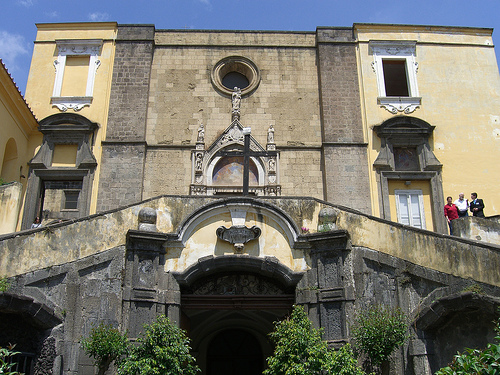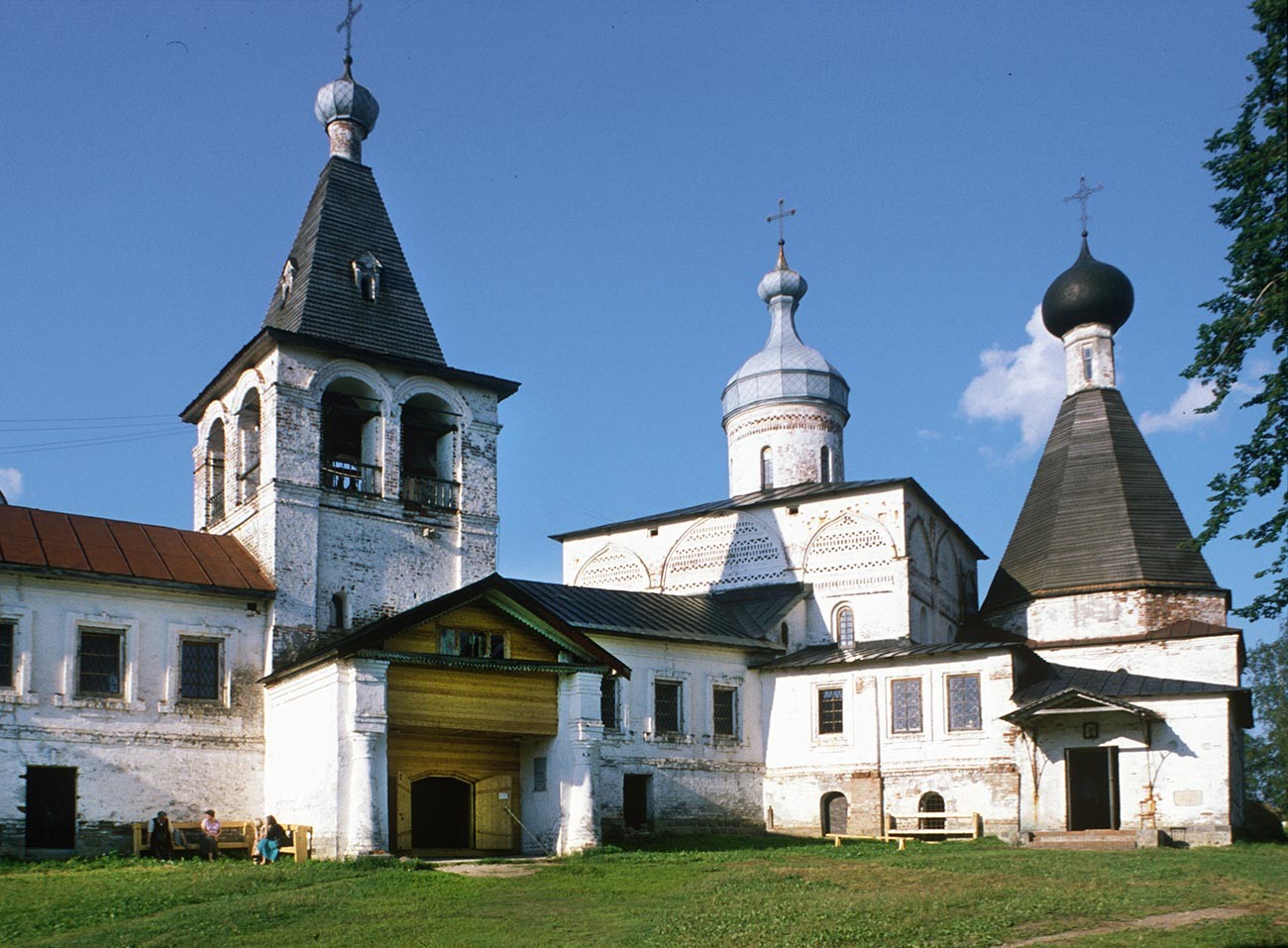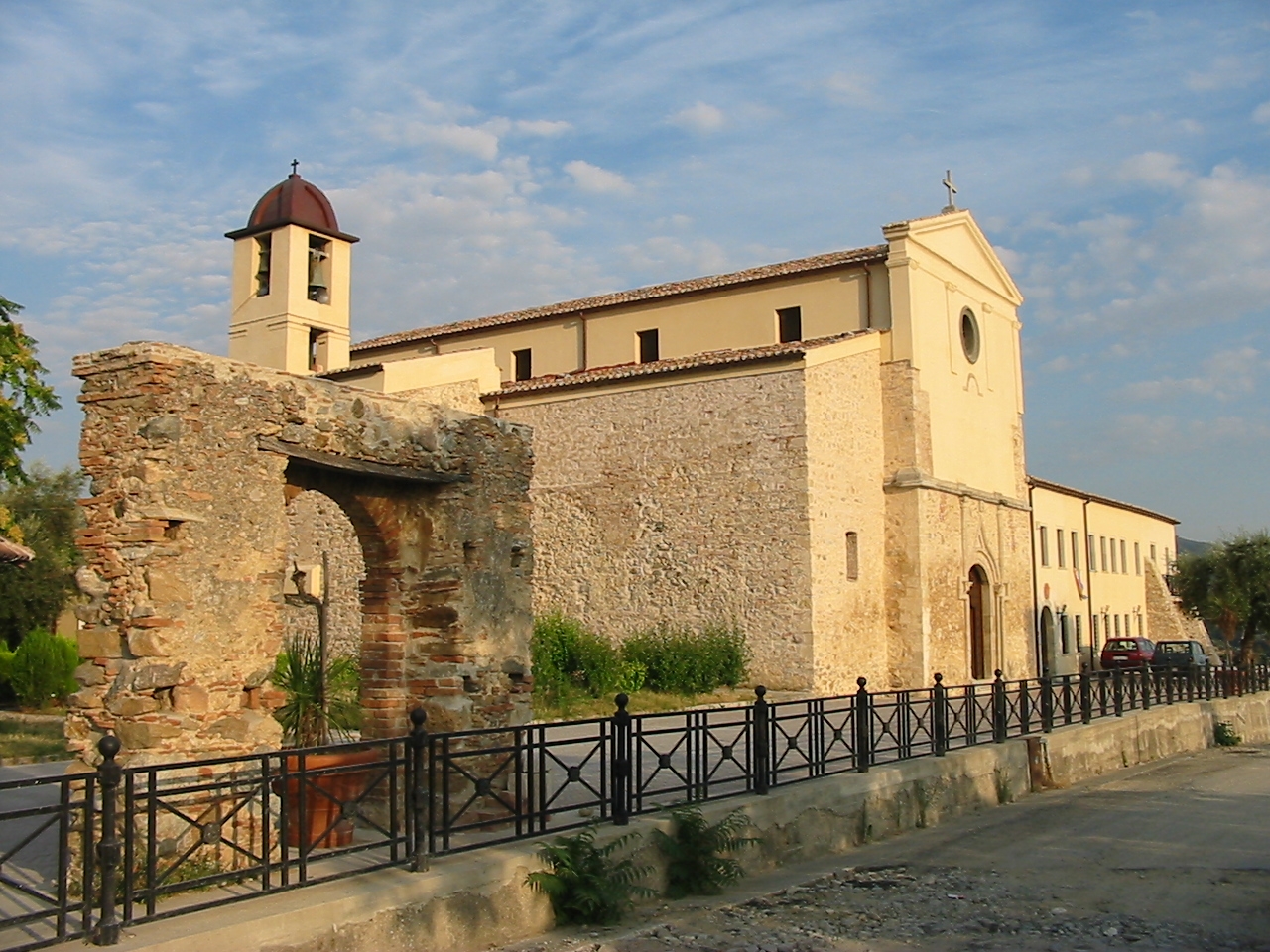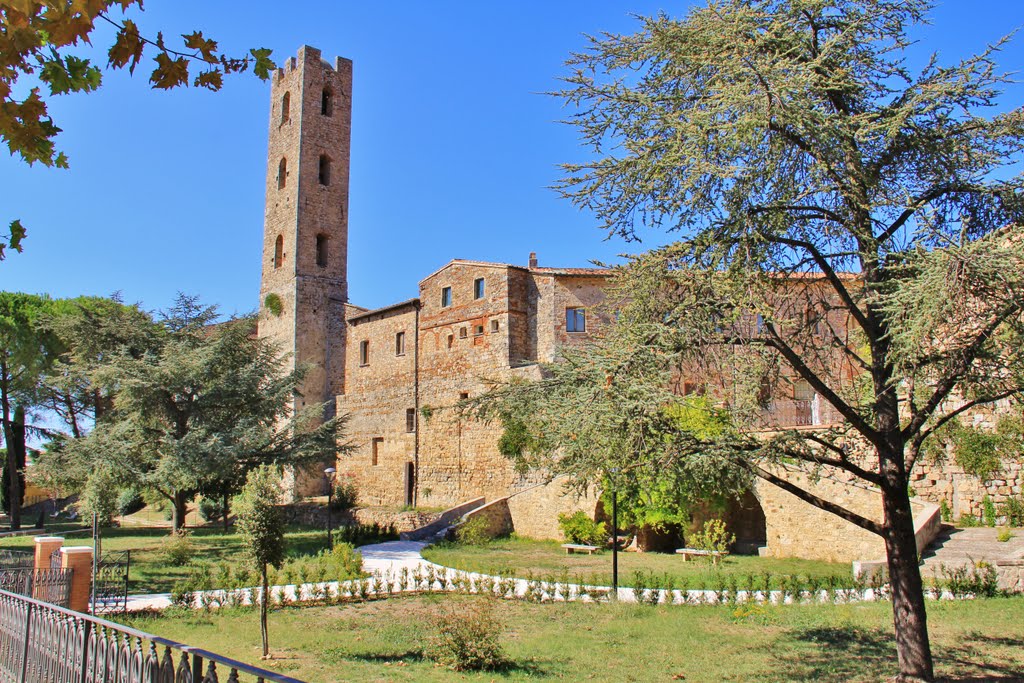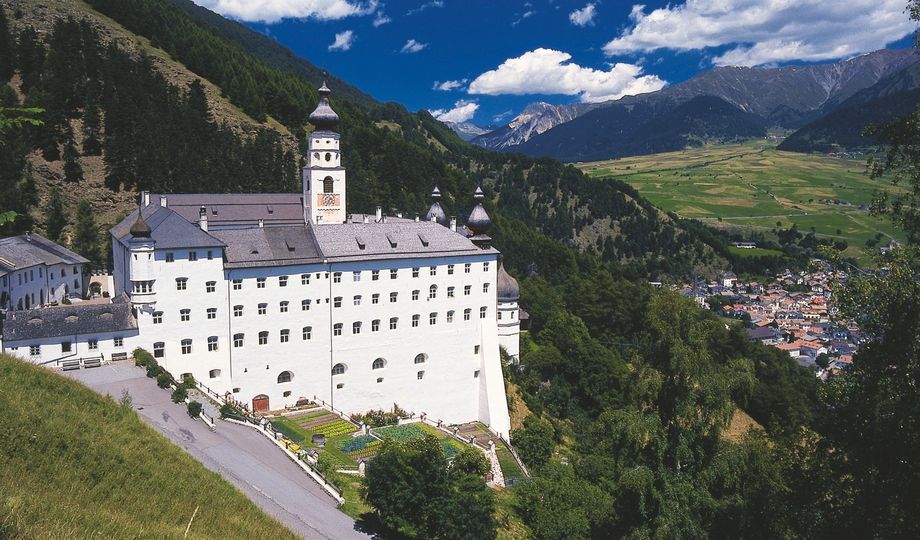The church is the result of the annexation of several architectural structures: the double staircase on the facade conceals the entrance to the underlying church of the Consolation in Carbonara; the central portal leads to the Chapel of St. Monica, the left portal to the side entrance of the church of St. John.
It is one of the richest churches in the city in terms of works of art.
The beautiful church was built thanks to a nobleman, Gualtiero Galeota, who between the years 1339 and 1343 donated the land outside the city walls called "ad carbonetum" to the Augustinian Fathers, allowing them to found the monastery and church (Via Carbonara is still called this way today because in the Middle Ages it was a place used to collect garbage outside the city walls).
With the arrival in Naples of King Ladislaus of Durazzo, a complete rebuilding of the church began and it substantially assumed its present appearance except for some changes and additions in the following centuries. The important entrance gives an idea of the importance of the church: it is accessed, in fact, by means of a monumental staircase built in the 1700s by Ferdinando Sanfelice, who built a double-ramp staircase to solve the problem of the differences in height between the street and the different entrances to the buildings that make up the complex architectural structure.
The entire complex includes, in fact, two other buildings of worship, which are the church of Santa Monica and the church of the Consolation in Carbonara; nearby there is also another church, that of the Pietatella in Carbonara. Inside the monumental church of St. John in Carbonara, built on a rectangular plan, stands the mausoleum of King Ladislaus, built between 1414 and 1428 and full of allegorical figures.
Behind the monument is the Caracciolo Chapel of the Sun, with the monument of Sergianni Caracciolo, great syniscalco and lover of Queen Giovanna. Other chapels, such as those of the Miroballo, Somma, and Caracciolo di Vico families, are rich in statues and important sepulchral monuments. The walls have frescoes by the school of Giotto depicting scenes of monastic life and the birth of the Virgin. To the right of the chancel is the Caracciolo di Vico Chapel, the sacristy, the altar of Our Lady of Grace, and the Miroballo burial monument.
Sixteen works by Giorgio Vasari, made for the church’s sacristy, were also part of the church. The panel paintings, were commissioned in 1545 by the Order of the Augustinians, and made by Vasari in 1546, with the collaboration of Cristofano Gherardi, one of his most talented collaborators. They were 16 paintings on panel, decorating the doors of the sacristy cupboards depicting Stories from the Old Testament and Episodes from the Life of the Baptist. The beautiful works have undergone rigorous restoration and are also on display at Capodimonte.
